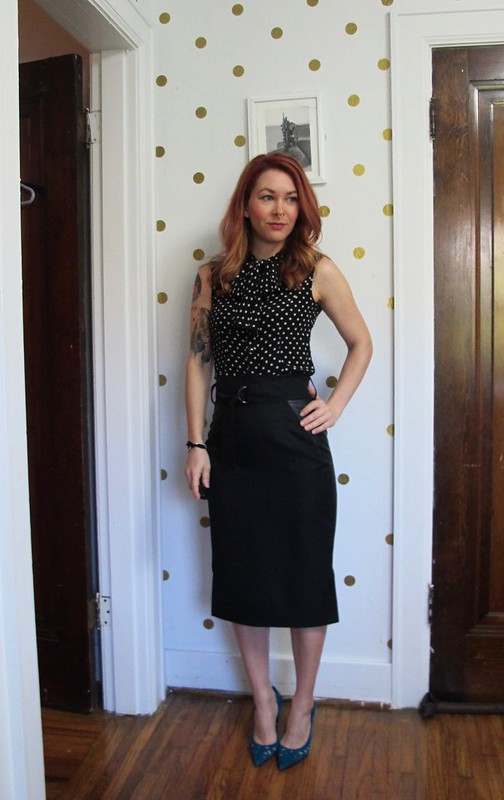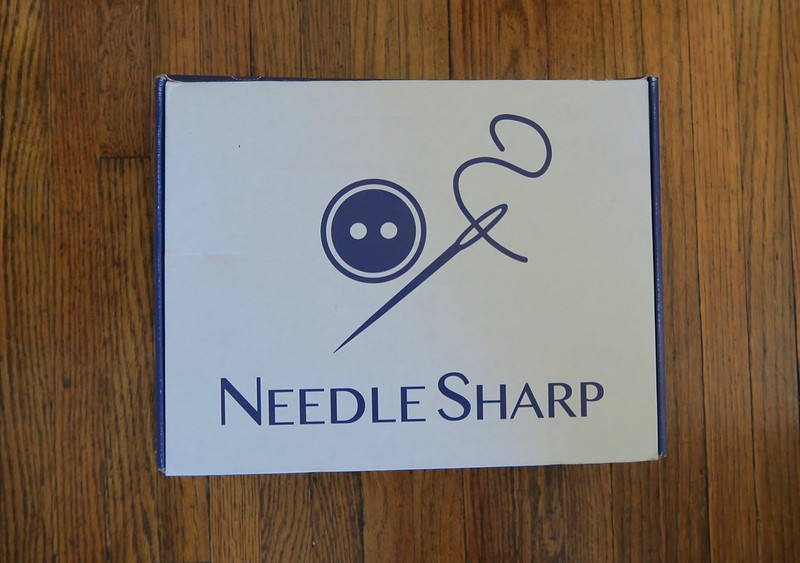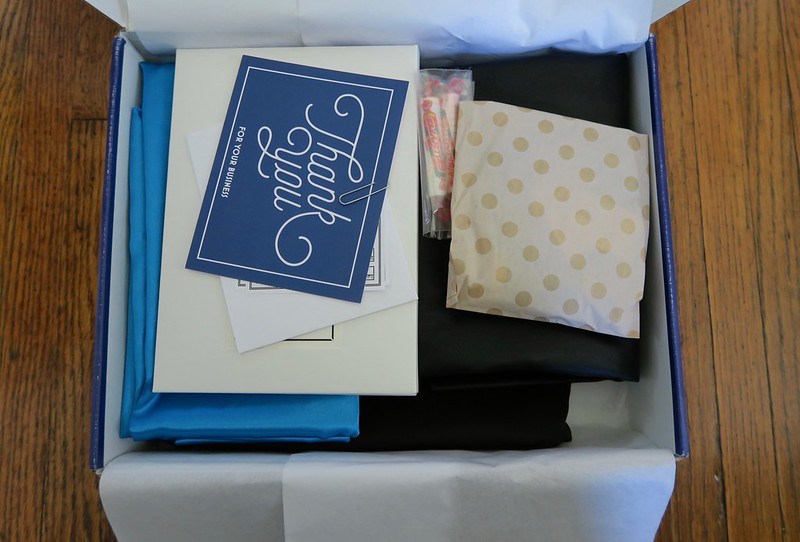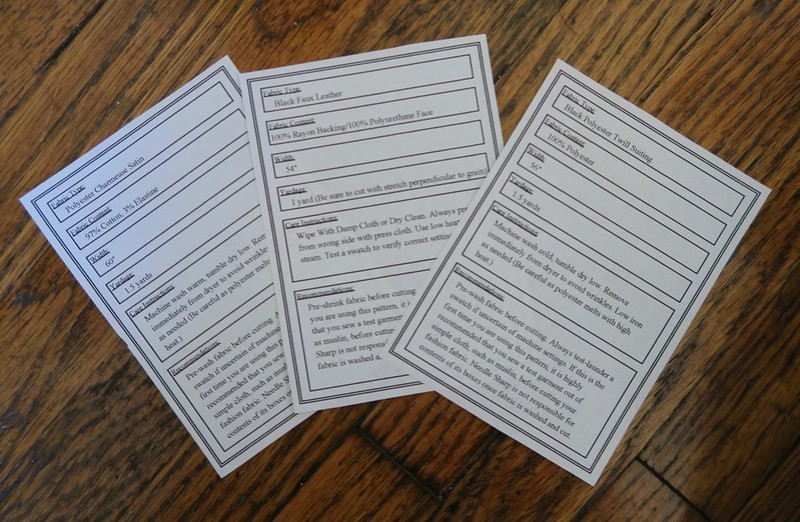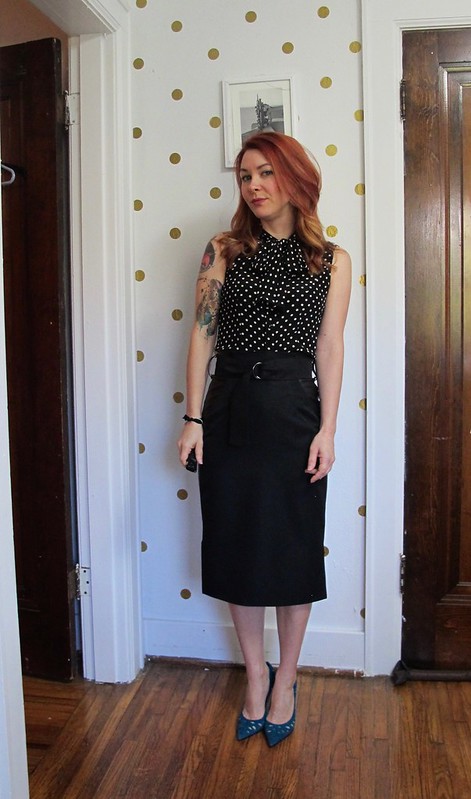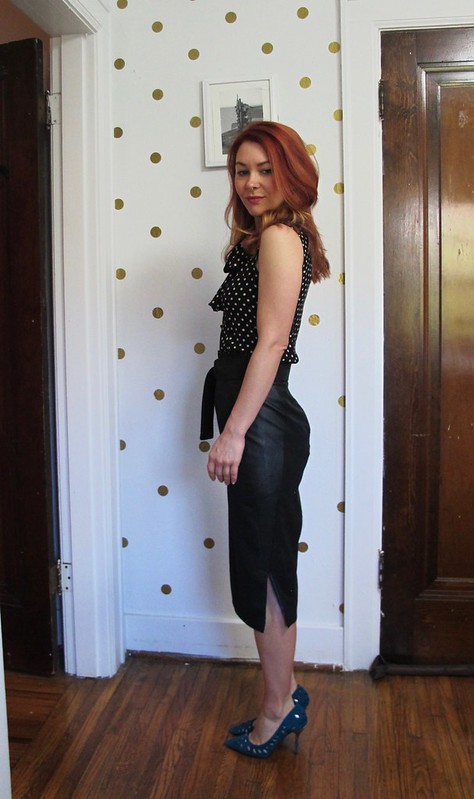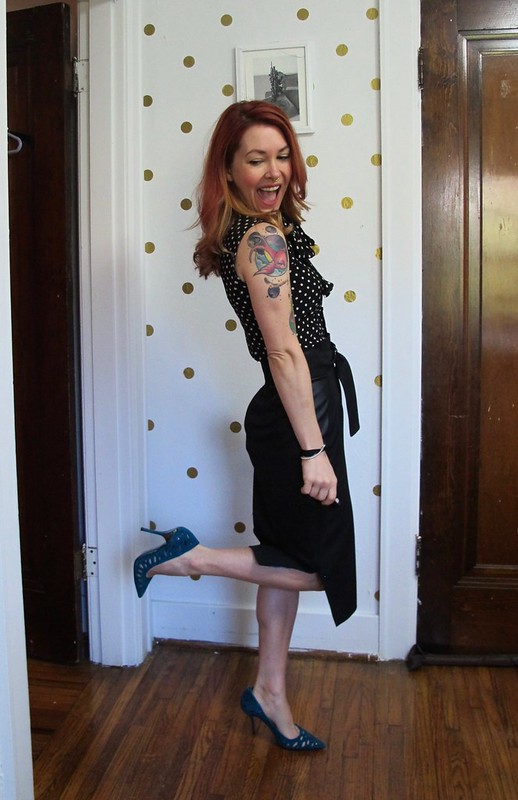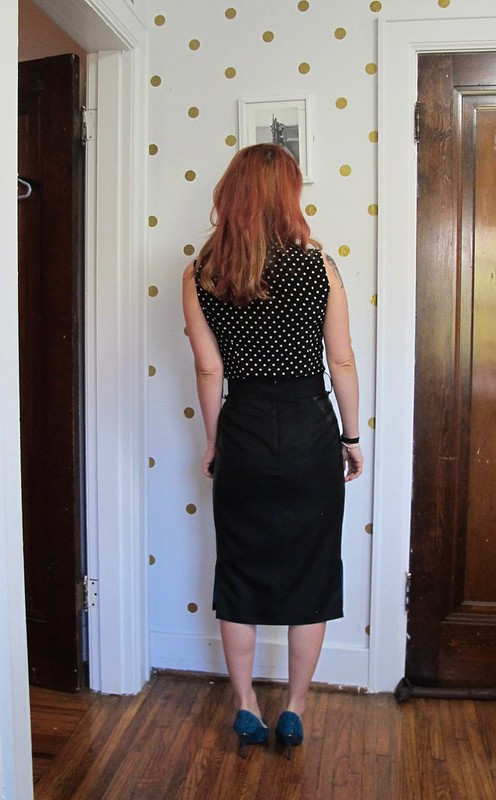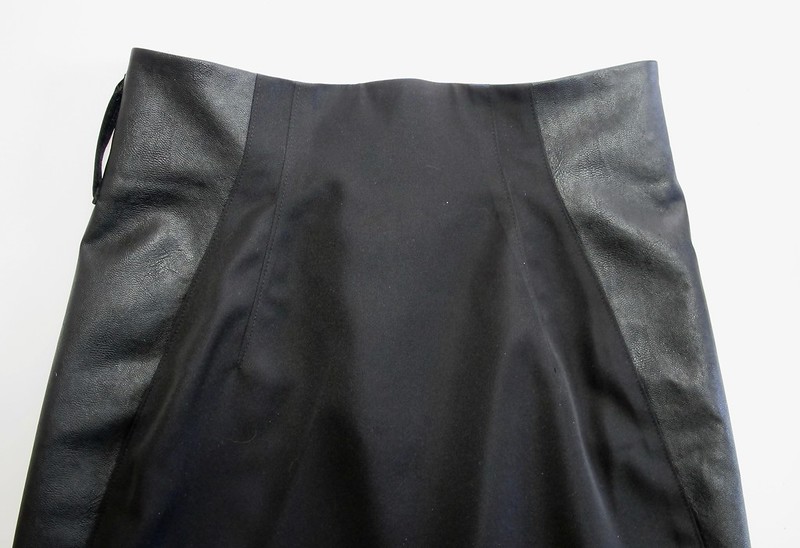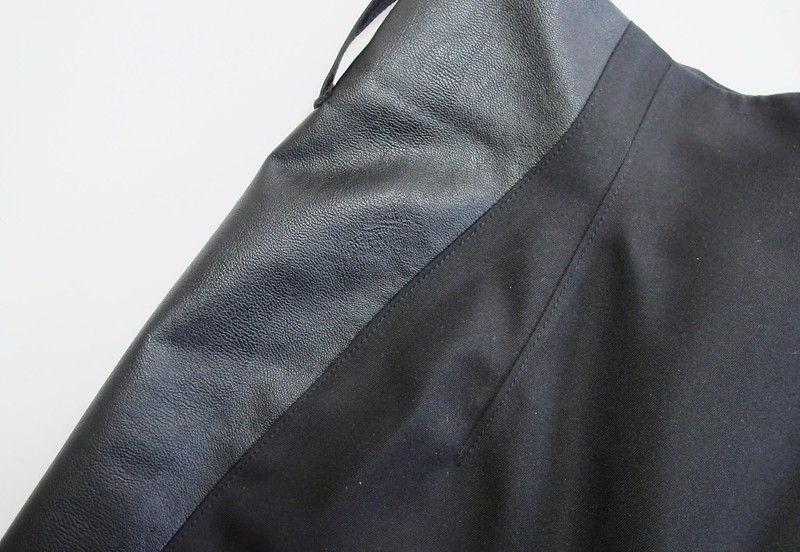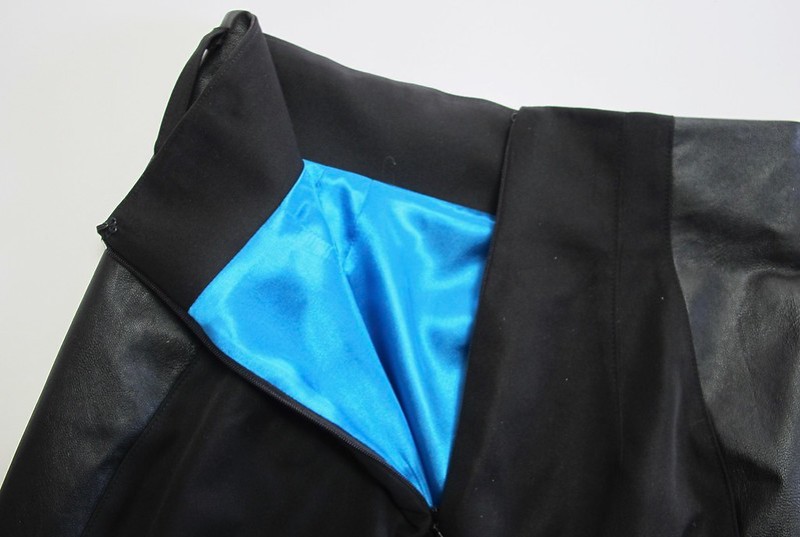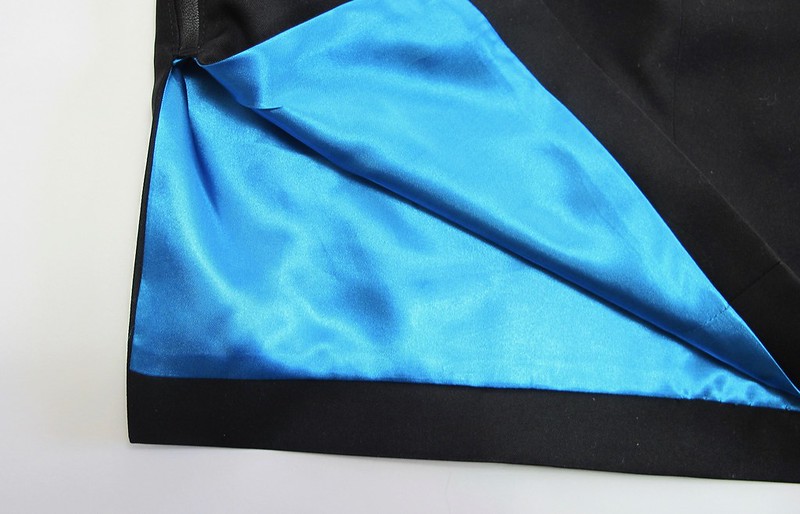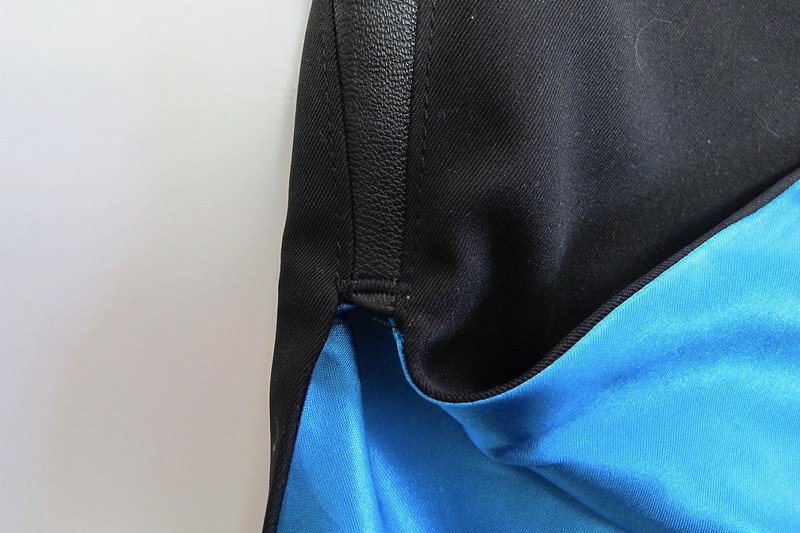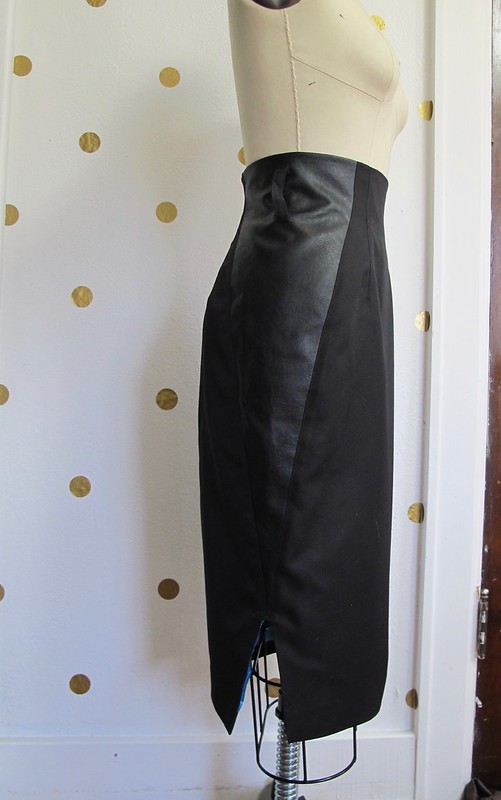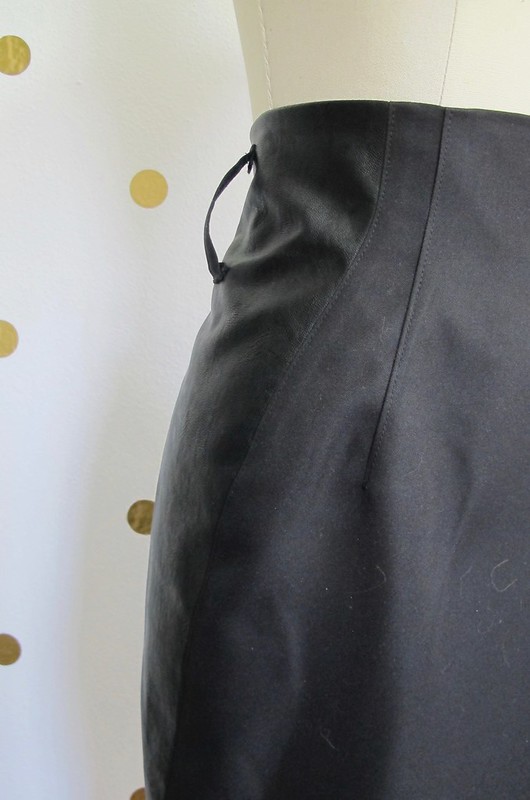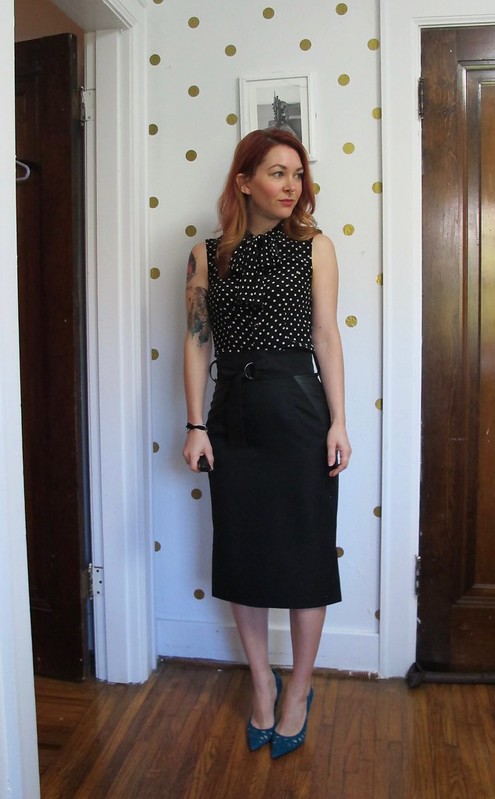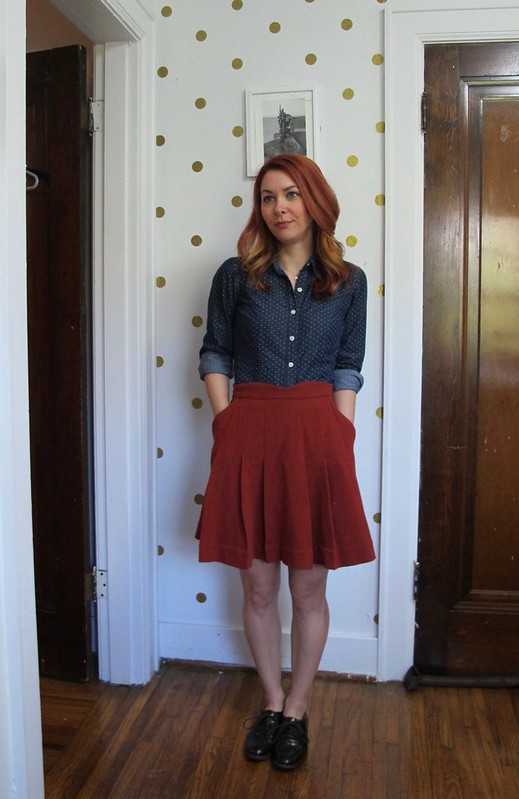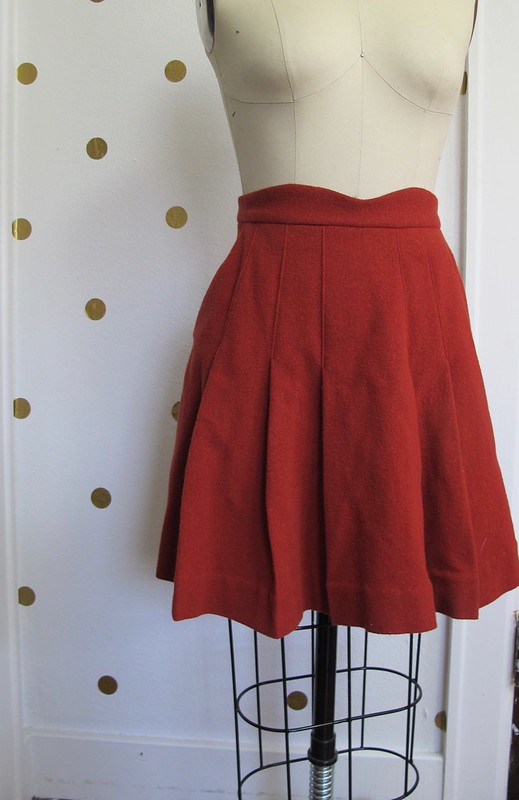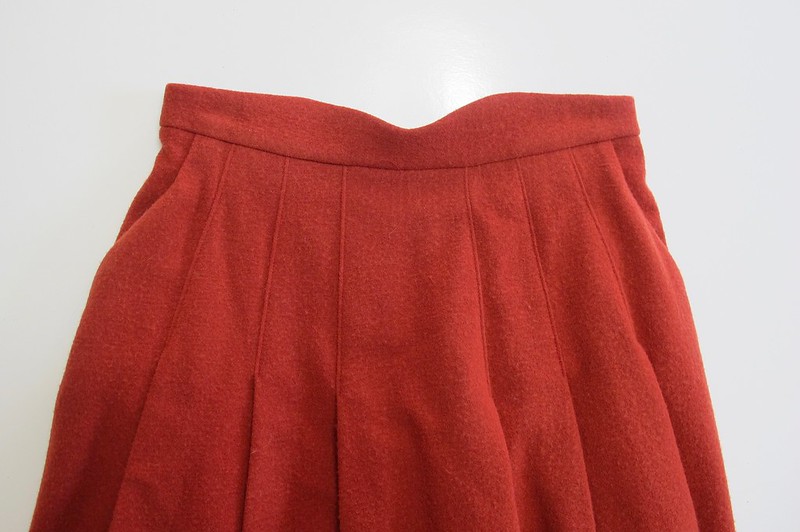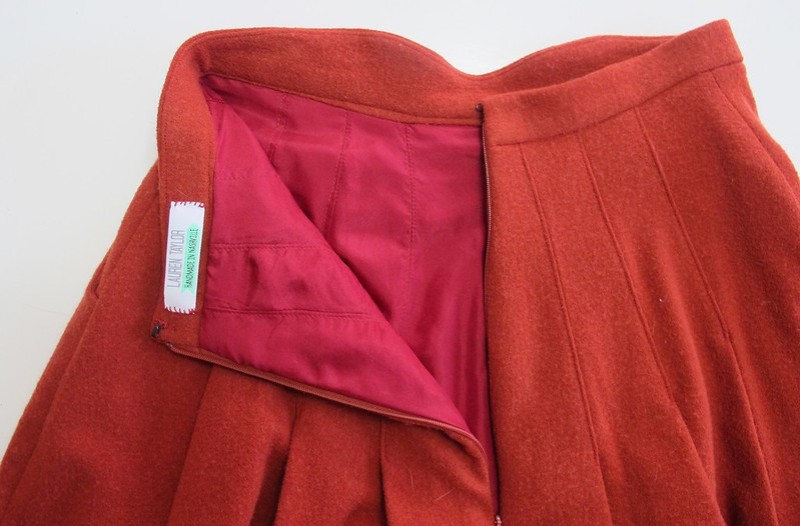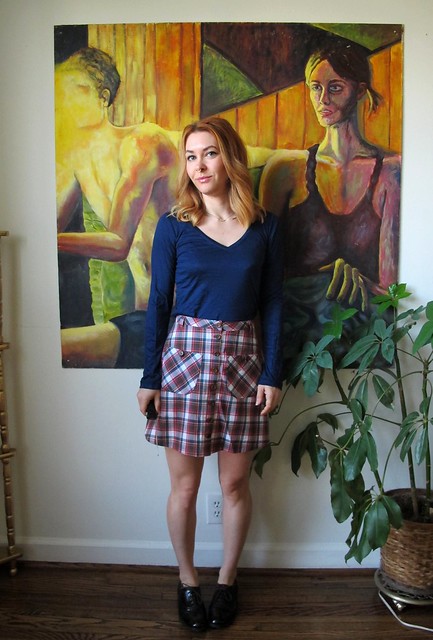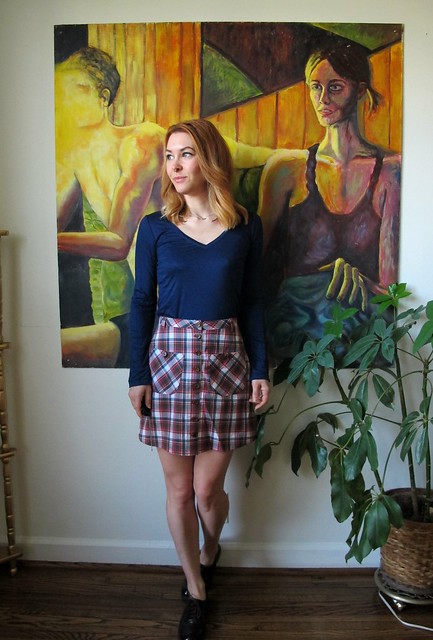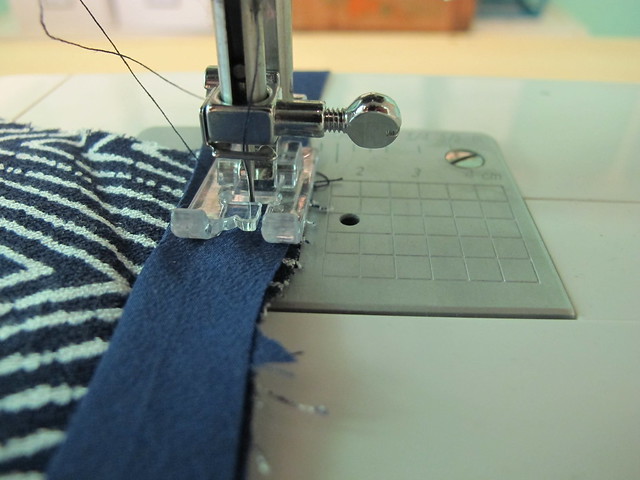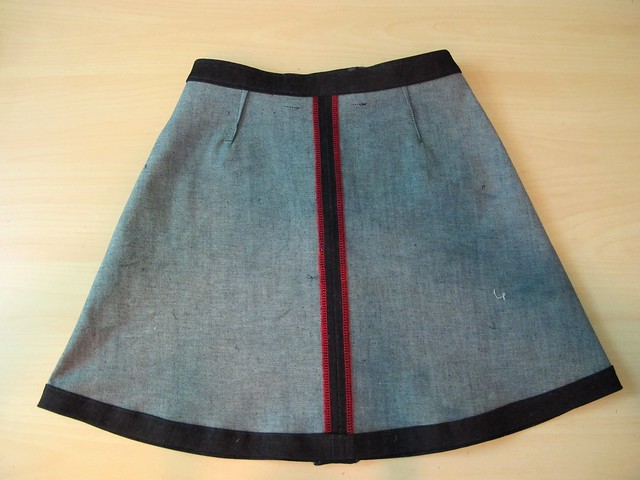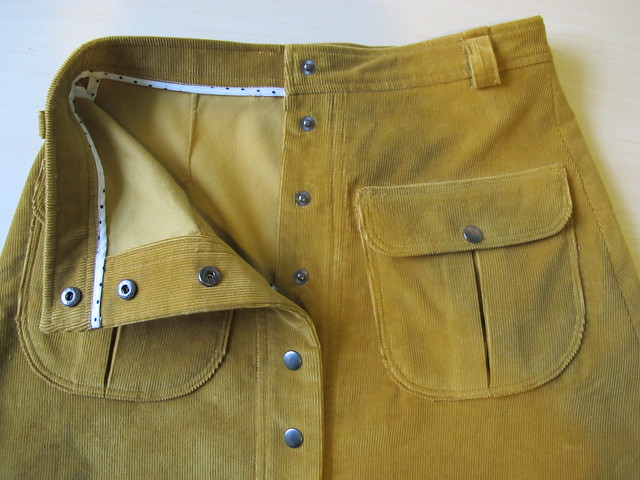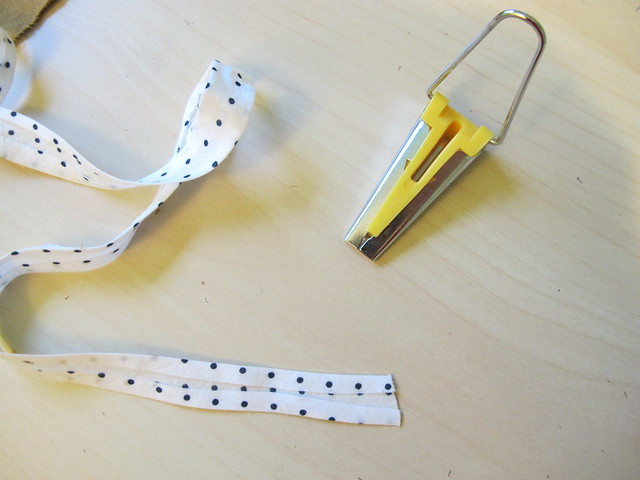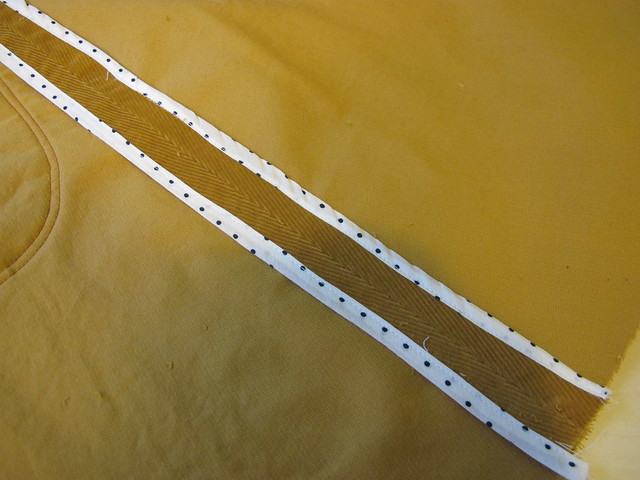Y’all, I love a good kit. I think I’ve mentioned this before, but I just want to reiterate in case you didn’t hear me the first time – I LOVE KITS. Something about having everything already picked + sorted, then corralled in its own little box just pleases me to no end.
So, today, I have another kit to show you. Or, rather, the results of a project from a kit.
A few months ago, I was contacted by Mary of Needle Sharp, who wanted to send me one of her kits to try out in exchange for some honest feedback. Now, if there is one thing I love more than kits, it’s sharing my opinion! Needle Sharp is a new company that provides sewing subscription boxes. There are 3 different levels to choose from – the Lightweight, the Mediumweight, and the Heavyweight (plus a Starter Box if you literally don’t have the tools), with 3 fabric options to choose from each category. Each month focuses on a theme – this month it’s pencil skirts, last month was wiggle dresses – and the boxes include everything you need to make the project, including pattern, fabric, interfacings and stabilizers, thread, notions, even machine needles. All you need to supply is the sewing machine and any tools (such as scissors, pins, chalk, etc).
I was given several box options to choose from (including upcoming months that haven’t been announced yet!), and I went with the mediumweight pencil skirt box. I chose the rock’n’roll option – black polyester suiting, black pleather triangle inserts. Let me say this is a DEFINITE departure from my style (minus the black part) – I haven’t worn a pencil skirt in ages, and this one is long enough that it requires wearing heels or else it looks stupid – but I’m pretty into it!
I took some photos of the box before I tore into it, so here’s that:
The box arrived on my doorstep with the logo clearly visible, so I knew exactly what was waiting for me (rather than it being a nondescript box that I ripped open with glee to realize it was just a bunch of Amazon books that my upstairs neighbor had ordered, ugh I’m still mad about that lol).
Everything was beautifully packaged, it looked like a present when I opened it. I didn’t take a picture of all the included stuff (well, I did, but it was a dumb and useless-looking picture so I deleted it), but my box contained the sewing pattern, suiting fabric, lining fabric, pleather, interfacing, 2 D rings, an invisible zipper, a spool of black thread, 2 sewing machine needles (80/12 and a leather needle – both clearly marked on a small card), and CANDY. TBH, the candy might have been the best part. I am always so tickled when I get surprise candy.
Another thing included in the box were cards for each piece of fabric, with yardage, content, and care instructions. I really appreciated this, since this information is rarely included with online fabric orders.
While I’m generally not a fan of polyester, the contents of this box were definitely a very high quality. It didn’t feel plastic-y like some polys, and in general the fabrics were easy to work with and handle. That lining shed all over the place like a bitch (a month later, I am still finding surprise tufts around my studio), but charmeuse has a tendency to do that regardless of whether it’s silk or poly. I especially loved the faux leather! It is a SUPER nice quality and actually looks like leather (as opposed to plastic, like a lot of the faux leathers I’ve seen). It is backed with a knit rayon, so it’s super easy to sew and doesn’t require a special foot (I did use the included leather needle). I received more fabric than I needed (each kit comes with enough fabric to make any of the sizes in the pattern), so I have tons to play with and put toward future projects. Pretty stoked about that!
So, now, let’s talk about the pattern – the Pulmu skir from Named Clothing. This was the pattern that was included in my box. As I’ve mentioned, a high-waisted pencil skirt really isn’t the kind of thing I wear these days, but I’m willing to branch out. I loved the way this one looks and I loved the idea of putting a cool fabric in those triangle inserts. This pattern is definitely a neat twist on an otherwise plain pencil skirt, and I’m totally into that.
With that being said, I feel like Named Patterns can be a little hit or miss. Some of the designs are cool (some of the designs leave me scratching my head. Sorry. I’m not a cool person.), the drafting is great and the pieces fit together well. The instructions make me want to SCREAM. Key steps are left out, additional wtf steps are included (like serging all the seam allowances – on a *closed* lined skirt. Really, dude?), but tbh I’m mostly mad because this pattern didn’t include any lengthen/shorten lines. Who does that?? And why??? So, that agitated me. Minor complaint, but frustrating nonetheless.
I knew this skirt was going to be long – the instructions state that the pattern is drafted for someone who is 5’8″ and to shorten if needed (again, then why the HELL would you not include lengthen/shorten lines, like, seriously dude), and I am more like 5’2″! The skirt is intended to hit calf length, and I was tempted to make it way shorter than that but decided to embrace that whole “wearing clothes out of my style comfort zone” and stick with the longer demure length. It does look cool, but the downside is that I have to wear heels or else I look frumpy. The upside is, I finally have something to wear these turquoise Jimmy Choos with, ha!
I mean, seriously, look at how fucking cool those shoes are.
In case you were curious, they are as uncomfortable as they look. I actually bought some new insoles to try out on these shoes and they have kind of changed my life – the Vivian Lou Insolia insoles, seriously amazing. My problem with heels is that all my weight gets pushed to my toes, and it gets incredibly painful really really fast (I took these photos before I tried the insoles and just the time it took to get pictures, my feet were screaming). These insoles redistribute the weight so your heel takes a lot of it, which makes the shoes easier to wear. I’m not delusional and I’m not going to tell you that these feel like sneakers now – but I can wear them and walk around and it’s way more tolerable. They are expensive for insoles – like $30! – but they have a money-back guarantee, so you’re not stuck with them if they suck. I’m pretty happy with this discovery!
And, in case you were wondering why I own a pair of designer shoes that I couldn’t even wear – my boss gave them to me (she never wore them either). I do not normally buy $1,000 shoes just for the hell of it 😛
Ok, moving on!
Based on my measurements, I’m a size 34 at the hip and between a 34/36 at the waist. I cut my skirt pattern between the 34/36 lines at the waist, grading down to a 34 at the hip to the hem. I also shortened the skirt by 2″ – which took a little problem solving on my end, as the skirt is pegged at the hem and has that triangular insert to contend with. What I ended up doing was shortening the skirt 1″ in two different places, which I think worked quite well. In addition to the pegged hem, the skirt has 2 side slits and an encased lining (it doesn’t hang free; it’s attached at the hem), so I wouldn’t be able to shorten the skirt after assembling it. Figuring out which 2 places to shorten was part of the challenge, but I ultimately went with around the hip area (which, strangely, is marked on the pattern), as well as a couple inches above the slits.
The waist fits great, but the hips could have stood to go up a size- as you can see, there are drag lines all over my butt. I’m not terribly concerned about it – the 3/8″ seam allowance means there’s not much room for fit adjustments, so I’m just gonna deal with what I was given here – but I’m certainly aware of it. Like I said, I cut my size based on my measurements, so I’m not sure if the finished hip is tighter due to my fabrics or an error in the sizing. The fabric recommendations on the pattern aren’t exactly helpful – they just say get fabric with “up to 5% stretch.” Oh, ok. To be fair, my leather inserts are stretch – but the lining isn’t, so it negates that. At any rate, I’m not concerned about it so whatever!
The poly + leather in this skirt pressed surprisingly well (I used medium heat, a presscloth, and a clapper to hold the heat in until it cooled), but I added a bunch of topstitching to get a really sharp edge. I topstitched all the darts, as well as the inserts, and I love the way it looks.
The skirt features a self-fabric facing to keep the top lining from peeking out, and the back closes with an invisible zipper.
The “vents” are actually just slits. I love the look of them but be aware they are not faced like a true vent – so your lining fabric will show. This was my one complaint about the kit is the color of that lining fabric. I know that people love a contrasty lining, but I generally stick with neutrals, especially in a black skirt that is going to show the lining. Based on my feedback, the kits now have the option to choose your lining color (you can get plain black and be boring like me, or a fun contrast if that’s what you like!).
One thing I added was a small bartack at the bottom of the slit, to reinforce it from tearing. BTW, the slit instructions are… interesting. It’s not my cleanest work, but it’ll do.
The skirt includes belt loops and a self-fabric belt that closes with D rings. I don’t know why I love that part so much, but I do. I’ve actually found other ways to wear the belt with different garments, so that’s a bonus!
I think that’s all the word vomit I have to say about this project! In short: the kit was great, and especially awesome for getting me to branch out a little, style-wise. If you are making this skirt (whether with a Needle Sharp kit or just because you own the pattern), I recommend sizing up at the hips, or using a fabric with some stretch (and making sure your lining stretches as well). And also check that length, because once you’ve sewn up the skirt you can’t exactly shorten it!
Oh, one last thing! If you want to try a box with Needle Sharp – use the code HOLIDAY10 to receive 10% off any box! This promo is good through 12/24/17.
** Note: All the supplies used to make this skirt were provided to me as a free kit from Needle Sharp, in exchange for my honest feedback. I was not required to post about this project, I just wanted to!

